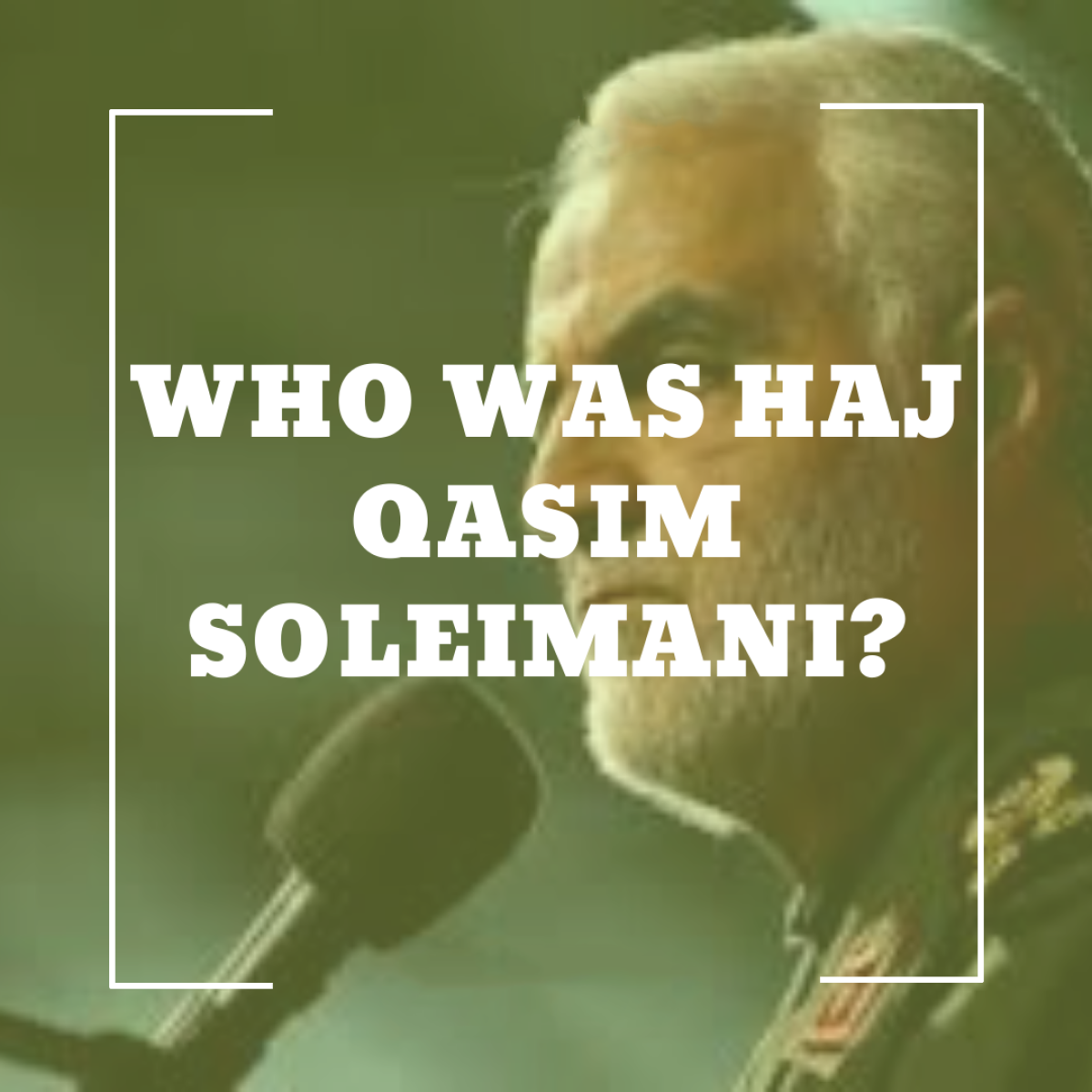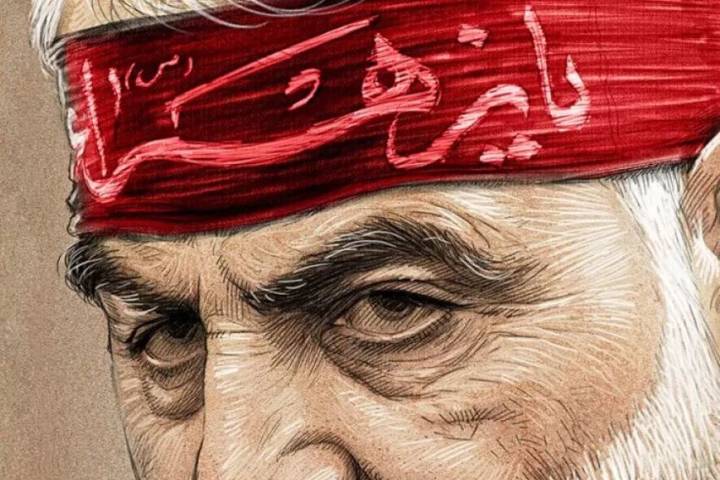Brigadier General Qassem Soleimani, usually referred to as Haj Qassem by his many devotees, was born in a humble working-class family on 10 March 1957, in Qanat-e Malek, a small village in Rabor district, Kerman province. When he was not more than 11 years old, Qassem ended his elementary educations and moved to Kerman. After receiving his high school diploma, the young Qassem had to earn money by working as a simple master-builder to support his impoverished family. Soon he was employed as a constructor by Kerman Water Department.
During the events which led to the 1979 victory of the Islamic revolution, Haj Qassem got acquainted with one Reza Kamyab, a young cleric from the holy city of Mashhad, encouraging him to join the ranks of the revolutionaries. Eventually, the young Qassem became one of the main organizers of the mass demonstrations against the U.S.-backed corrupt Pahlavi regime. Not before long, Haj Qassem, by now in his early 20s, won a distinguished place in the vanguard of the Islamic Revolutionary Guards Corps (IRGC) in Kerman.
Before the beginning of the 8-year Sacred Defense war, terrorist militias plunged the Iranian Kurdistan region into a violent conflict, which made Haj Qassem set off on his first military mission to the western parts of Iran to defend its innocent civilians. When the Iraqi despot, Saddam Hussein, finally invaded the Iranian territories in 1980, Haj Qassem was in charge of training several battalions from Kerman to be dispatched to the fronts, which later he accompanied them as well. In late 1981, the then commander-in-chief of IRGC, Maj. Gen. Mohsen Rezaee appointed Haj Qassem as the commander of the newly-founded 41st Thar’allah Division. Haj Qassem proved to be a brilliant tactician and gifted military commander as he shone brightly in Karbala-1, Walfajr-10, Karbala-5, and Shalamcheh operation strike.
Following the end of the Iran-Iraq War in 1988, Haj Qassem went back to his home town where he embarked on an arduous campaign against organized crime gangs, smuggling narcotics through the eastern Iranian borders. Having become by now an indispensable figure in IRGC elite forces, Haj Qassem dramatically restored security and law in the Eastern Iranian provinces. A father of five children, he was ultimately appointed in 2000 as the new commander of the Quds Force by the Iranian Supreme Leader Ayatollah Khamenei, taking the command from his predecessor, General Wahidi. Haj Qassem had played an enormous role in expanding and strengthening the Quds Force scope of activities in combating the nefarious American hegemony.
Fighting at the forefront of the relentless Iranian struggle to oust American imperialist invaders from the Middle-East, It was Haj Qassem who significantly boosted the Quds Force capabilities to thwart the vicious Israeli agendas vis-à-vis the Palestinians and Lebanese people. In the 2006 Israel–Hezbollah War and as the Israeli jets barbarously targeting the Lebanese civilians, schools, and orphanages, Martyr Soleimani made one of the most impressive episodes of his legendary tenure foiling the Israeli efforts and rendering the treacherous Arab regimes and their American masters an unprecedented military and political catastrophe.
It was in 2010 when General Haj Qassem Soleimani was promoted to the rank of Major General by the Commander-in-Chief of Iranian armed forces, Ayatollah Khamenei. Praising his sincere devotion and many years of outstanding service, the Iranian Supreme Leader bestowed the epithet a (living martyr of the revolution) upon Haj Qassem Soleimani.
When the al Qaeda-inspired rebellion erupted in Syria, Martyr Soleimani took an eminent part in vanquishing the Saudi-backed extremists. Later, as ISIS swept large swathes of territories in northern Iraq; he led the local Iraqi resistance forces, and to the chagrin of the Saudis and Zionist, Soleimani’s men managed not only to stymie the advancing ISIS thugs from moving further toward Iraqi Kurdish-populated areas but above all save the Iraqi capital, Baghdad.
As the Iranian-supported forces scored more decisive victories against the ISIS terrorist and as the popularity of Martyr Soleimani rose to the highest peaks, rumors circulated about Haj Qassem trying to put his uniform aside and stand for president; though, he rejected them, saying he considered himself as just being a loyal soldier of Imam Khamenei.
Cherished by the absolute majority of Iranian patriots and non-Iranians alike, they deemed Haj Qassem as a gallant hero fighting the mailing plots concocted by the U.S. imperialism and saving oppressed people anywhere and anytime.
On 3 January 2020, a United States drone struck the convoy taking Haj Qassem Soleimani scheduled to meet the-then Iraqi Prime Minister, martyring him near Baghdad International Airport.
Following his martyrdom by the U.S. drones, millions of the Iranian took to the street, chanting slogans against the American terrorism, vehemently condemning the perfidious and cowardly act of assassinating their beloved General, and evincing a more resolute resistance to Washington state-terrorism machinations.
For its part, IRGC vowed a terrible vengeance on the criminal clique in the White House and to oust and rob the terrorist American Army from enjoying any peace after the Martyrdom of Haj Qassem Soleimani.
1
During the events which led to the 1979 victory of the Islamic revolution, Haj Qassem got acquainted with one Reza Kamyab, a young cleric from the holy city of Mashhad, encouraging him to join the ranks of the revolutionaries. Eventually, the young Qassem became one of the main organizers of the mass demonstrations against the U.S.-backed corrupt Pahlavi regime. Not before long, Haj Qassem, by now in his early 20s, won a distinguished place in the vanguard of the Islamic Revolutionary Guards Corps (IRGC) in Kerman.
Before the beginning of the 8-year Sacred Defense war, terrorist militias plunged the Iranian Kurdistan region into a violent conflict, which made Haj Qassem set off on his first military mission to the western parts of Iran to defend its innocent civilians. When the Iraqi despot, Saddam Hussein, finally invaded the Iranian territories in 1980, Haj Qassem was in charge of training several battalions from Kerman to be dispatched to the fronts, which later he accompanied them as well. In late 1981, the then commander-in-chief of IRGC, Maj. Gen. Mohsen Rezaee appointed Haj Qassem as the commander of the newly-founded 41st Thar’allah Division. Haj Qassem proved to be a brilliant tactician and gifted military commander as he shone brightly in Karbala-1, Walfajr-10, Karbala-5, and Shalamcheh operation strike.
Following the end of the Iran-Iraq War in 1988, Haj Qassem went back to his home town where he embarked on an arduous campaign against organized crime gangs, smuggling narcotics through the eastern Iranian borders. Having become by now an indispensable figure in IRGC elite forces, Haj Qassem dramatically restored security and law in the Eastern Iranian provinces. A father of five children, he was ultimately appointed in 2000 as the new commander of the Quds Force by the Iranian Supreme Leader Ayatollah Khamenei, taking the command from his predecessor, General Wahidi. Haj Qassem had played an enormous role in expanding and strengthening the Quds Force scope of activities in combating the nefarious American hegemony.
Fighting at the forefront of the relentless Iranian struggle to oust American imperialist invaders from the Middle-East, It was Haj Qassem who significantly boosted the Quds Force capabilities to thwart the vicious Israeli agendas vis-à-vis the Palestinians and Lebanese people. In the 2006 Israel–Hezbollah War and as the Israeli jets barbarously targeting the Lebanese civilians, schools, and orphanages, Martyr Soleimani made one of the most impressive episodes of his legendary tenure foiling the Israeli efforts and rendering the treacherous Arab regimes and their American masters an unprecedented military and political catastrophe.
It was in 2010 when General Haj Qassem Soleimani was promoted to the rank of Major General by the Commander-in-Chief of Iranian armed forces, Ayatollah Khamenei. Praising his sincere devotion and many years of outstanding service, the Iranian Supreme Leader bestowed the epithet a (living martyr of the revolution) upon Haj Qassem Soleimani.
When the al Qaeda-inspired rebellion erupted in Syria, Martyr Soleimani took an eminent part in vanquishing the Saudi-backed extremists. Later, as ISIS swept large swathes of territories in northern Iraq; he led the local Iraqi resistance forces, and to the chagrin of the Saudis and Zionist, Soleimani’s men managed not only to stymie the advancing ISIS thugs from moving further toward Iraqi Kurdish-populated areas but above all save the Iraqi capital, Baghdad.
As the Iranian-supported forces scored more decisive victories against the ISIS terrorist and as the popularity of Martyr Soleimani rose to the highest peaks, rumors circulated about Haj Qassem trying to put his uniform aside and stand for president; though, he rejected them, saying he considered himself as just being a loyal soldier of Imam Khamenei.
Cherished by the absolute majority of Iranian patriots and non-Iranians alike, they deemed Haj Qassem as a gallant hero fighting the mailing plots concocted by the U.S. imperialism and saving oppressed people anywhere and anytime.
On 3 January 2020, a United States drone struck the convoy taking Haj Qassem Soleimani scheduled to meet the-then Iraqi Prime Minister, martyring him near Baghdad International Airport.
Following his martyrdom by the U.S. drones, millions of the Iranian took to the street, chanting slogans against the American terrorism, vehemently condemning the perfidious and cowardly act of assassinating their beloved General, and evincing a more resolute resistance to Washington state-terrorism machinations.
For its part, IRGC vowed a terrible vengeance on the criminal clique in the White House and to oust and rob the terrorist American Army from enjoying any peace after the Martyrdom of Haj Qassem Soleimani.
1
acquainted
American
Ayatollah Khamenei
campaign
Children
civilians
Criminal
Department
distinguished
dramatically
educations
elementary
Gen. Soleimani
general soleimani
Haj Qassem
Hezbollah
impoverished
IRAN
ISIS
Israel
Kerman
Lebanese
Martyr Soleimani
middle east
military
Palestine
poster soleimani
Qasem Soleimani
Qassem soleimani
Quds
Quds Force
Revolutionary
Soleimani
territories
terrorism
Washington






Comment
Post a comment for this article